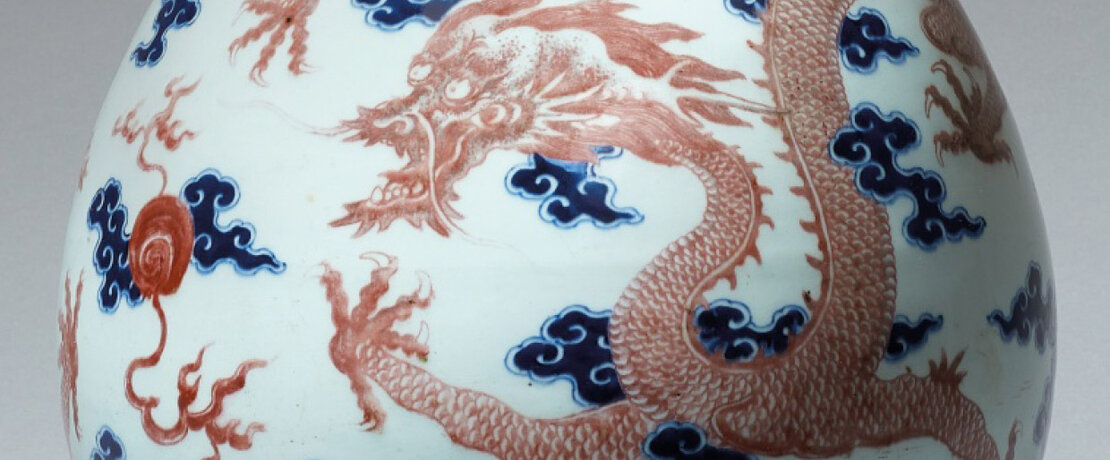Asian Art - A dragon flies high
With almost 900 objects, the traditional two-day Asian Art auction on 24th and 25th June traversed the centuries. Particular high points were seen for Chinese monochrome porcelains and Japanese swords, and, with a result of 2 million euro, it was a very successful auction.

China
The highlight of the auction was a much-coveted dragon vase with underglaze-blue and copper-red decoration from the Qing dynasty (1644–1911) featuring a Qianlong six-character seal mark. With ten telephone bidders and numerous internet bidders, a prolonged bidding war erupted. Estimated at € 30/50,000, it was pushed ever higher until it reached € 300,000. The vase will now be making its way back to China (lot 139).
A fine, 18th/19th century pair of chairs made of prized huanghuali wood also saw a significant increase from € 20,000 to € 94,000, and thus were the highlight of the Chinese furniture (lot 115). The selection of monochrome porcelains provided an auction high point. Rich in shape and colour, they included an 18th century yuhuchun ping-type vase with copper-red jihong glaze which was won by a Chinese bidder for € 38,000 (lot 140, € 15/20,000). An impressive, classical gilt bronze figure of Buddha Shakyamuni from the 17th/18th century also rose, this time from € 30,000 to € 60,000 (lot 101).
One of the successes amongst the Tibetan art was a rare set of six thangka depicting the First Panchen Lama and his earlier incarnations. It has changed hands and countries, moving from the Rhineland to Texas for € 35,000 (18th/19th century, lot 76, € 30,000).
The first day was dominated by Chinese art, but also featured art from India and Tibet. A fine Pakistan Buddha Shakyamuni worked from grey schist (Gandhara, 2nd/3rd century), found a new owner for € 25,000 (lot 1, € 20,000).
Japan
With more than 40 woodcut prints leading the way, the second auction day was dedicated entirely to the art of Japan. The highlight of the offer was an oban by Hokusai with a rare depiction of a picknick at the so-called Cushion Pine in Aoyama from the series of the 36 views of Fuji (around 1830/1831, lot 405, € 10/12,000). It sold for € 17,500 to a German collector.
Following the successful sale of several suits of armour in the auction last December, Lempertz was happy to once again acquire several suits to further enhance the offer of Samurai art. The offer encompassed over 30 lots of armour and helmets, as well as a range of over 70 swords and lances, probably unique in Europe. These were all from private collections and were rounded off by an equally impressive selection of tsuba. In all, the section was crowned by a suit of armour from the 18th century which was sold to an American collector for € 25,000 (lot 553, € 20,000).
Lempertz’ traditionally broad netsuke offer was led by a 5.6 cm long boxwood hare carved by Yoshitsugu in the early 19th century, and which has now passed to a collector in New Zealand for € 11,000 (lot 838, € 2,000), whilst the Japanese modern and contemporary paintings saw success for an untitled canvas by Yae Asano with € 17,500 (lot 474, € 5,000).
